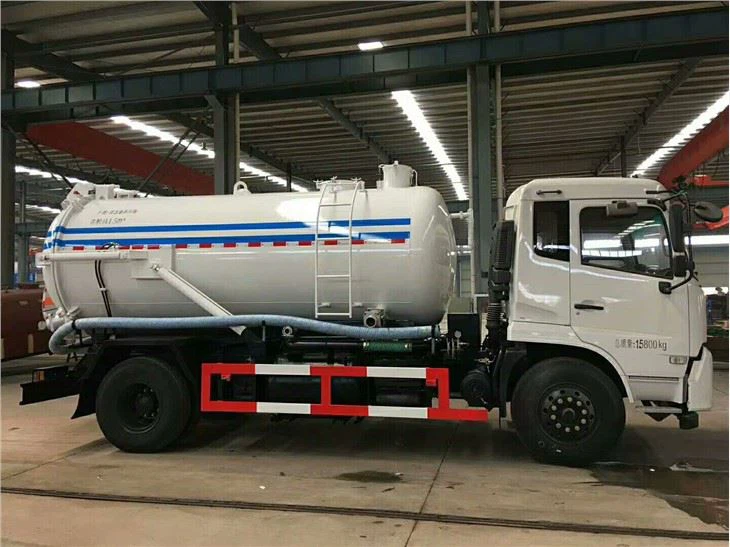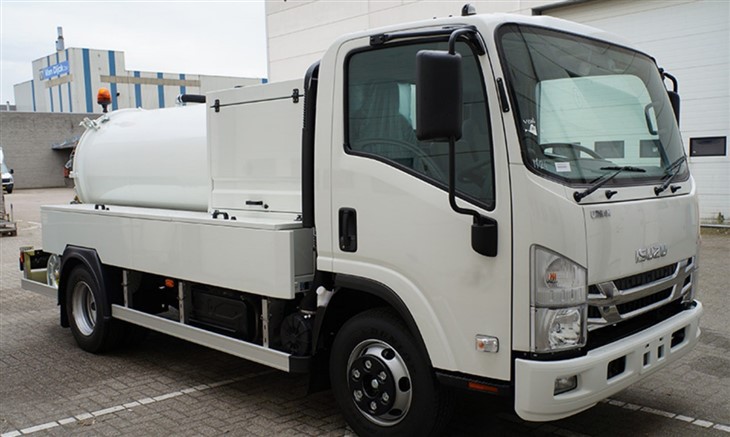Understanding Garbage Truck Height Clearance: A Comprehensive Guide

Garbage trucks play a crucial role in maintaining cleanliness in urban and rural areas alike, but their size and height can present challenges. Understanding garbage truck height clearance is essential for city planners, waste management companies, and residents. This article explores the topic in depth, providing insights on why it matters, how clearances are typically measured, and practical tips to ensure that waste collection proceeds smoothly.
What is Garbage Truck Height Clearance?
Garbage truck height clearance refers to the minimum vertical space required for a garbage truck to operate safely without any obstruction. This measurement is crucial for ensuring that the truck can navigate under bridges, overpasses, and other height-restricted areas without risk of damage or accidents.
Why Garbage Truck Height Clearance Matters
Understanding the required height clearance is essential for several reasons:
- Safety: Ensuring that garbage trucks have adequate clearance helps prevent accidents, which can be dangerous for both drivers and pedestrians.
- Operational Efficiency: Knowing the height requirement allows waste management companies to plan routes more effectively, preventing delays.
- Infrastructure Protection: Vehicles that collide with low bridges or overhangs can cause significant structural damage.
How is Garbage Truck Height Measured?
Standard Measurements
The height of garbage trucks can vary based on their type and specifications. Here’s a breakdown of standard heights:
| Type of Garbage Truck | Average Height |
|---|---|
| Rear Loader | 11-13 feet |
| Front Loader | 12-14 feet |
| Side Loader | 11-13 feet |
| Roll-Off Truck | 12-14 feet |
Factors Affecting Height Clearance
Several factors can affect the height clearance requirements for garbage trucks:
- Equipment Variations: Different models have different height specifications due to design and functionality.
- Load Weight: The weight of the garbage can influence the height as loaded trucks may settle lower.
- Special Attachments: Some trucks come with extra equipment that could increase their height.
Common Height Restrictions in Urban Areas
Bridges and Overpasses

In urban settings, bridges and overpasses often pose a challenge. Knowing the height of these structures along a route is essential for safe passage. Most city planners ensure that bridges accommodate the following minimum heights:
| Structure Type | Minimum Clearance Heights |
|---|---|
| Underpasses | 14 feet |
| Overpasses | 15-16 feet |
| Train Tracks | 14.5 feet |
Residential Areas
In residential neighborhoods, height restrictions can stem from:
- Trees: Low-hanging branches can obstruct taller trucks.
- Utility Wires: Power lines and phone lines must be considered in height calculations.
Best Practices for Ensuring Garbage Truck Clearance
Route Planning
Effectively planning routes can prevent height-related issues. Here are some practical tips:
- Use GPS Technology: Advanced GPS systems can help identify low-clearance areas.
- Consult Maps: Detailed maps highlight height restrictions.
- Feedback from Drivers: Regular feedback can help improve future route planning.
Community Awareness
Raising awareness within communities can alleviate potential clearance issues. Strategies include:
- Informational Signage: Signs can alert drivers about low-height areas.
- Community Meetings: Engage residents to inform them about truck routes and height restrictions.
Technological Innovations in Garbage Trucks
Smart Sensors
Modern trucks are increasingly equipped with technology that enhances height clearance awareness:
- Height Sensors: These detect clearance as trucks approach obstacles.
- Obstacle Detection Systems: Alert drivers in real-time about potential clearance risks.

Route Optimization Software
Waste management companies utilize software to analyze routes for height clearance, ensuring optimal navigation through urban settings:
- Simulations: Testing routes in a simulated environment can save time and reduce error.
- Data Collection: Gather data from past routes helps identify common clearance issues.
Cost Implications of Improper Height Clearance
Accidents and Damages
Improper clearance can lead to costly damages, both to the garbage truck and the infrastructure:
- Repairs: Fixing a damaged truck can be expensive and time-consuming.
- City Liability: Damage to public infrastructure may incur costs for municipalities.
Operational Delays

Delays due to height issues can lead to inefficient waste management:
- Service Interruptions: Delays may affect schedules, leading to missed collections.
- Increased Fuel Costs: Rerouting trucks increases fuel consumption.
International Standards and Regulations
Height Limit Regulations
Several countries have set regulations regarding the maximum height for commercial vehicles:
| Country | Maximum Height Limit |
|---|---|
| United States | 13.5 feet |
| Canada | 13.5 feet |
| European Union | 13.1 feet |
Compliance with Local Laws
It’s crucial for companies to comply with local regulations regarding vehicle height:
- Permits: Some areas require permits for vehicles that exceed typical height limits.
- Local Ordinances: Awareness of city-specific restrictions can prevent legal issues.
FAQs about Garbage Truck Height Clearance
1. What is the average height of a garbage truck?
The average height of a garbage truck is typically between 11 to 14 feet, depending on the type of truck.
2. How can I find out the height clearance of a specific road?
You can check local traffic signage, maps, or consult your city’s engineering department for road height clearance information.
3. Are there special permits required for oversized garbage trucks?
Yes, oversized trucks may require special permits, especially in areas with specific height restrictions.
4. What should I do if a garbage truck hits a low-hanging branch on my street?
Contact your local waste management company to report the incident, as they may need to assess the situation and potentially trim the branches.
5. How does height clearance affect waste collection schedules?
Height clearance impacts schedules as trucks must navigate around obstacles; failures can lead to delays in collections.
6. What technologies are available to prevent height-related accidents?
Smart sensors, obstacle detection systems, and route optimization software are common technologies used to help prevent such accidents.
